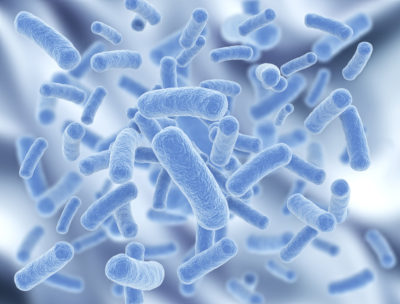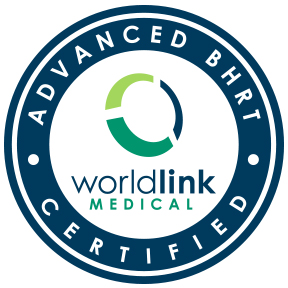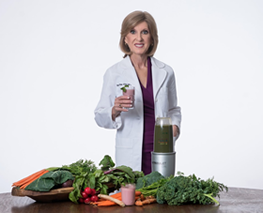Are you aware that our first line of defense to fight disease lies in our gut? The term “gut” refers to the lower part of the digestive tract, incorporating the small and large intestines, where the main point of absorption of “foreign” substances occurs. Seventy percent of our immune system is located here. “Good” microorganisms, including bacteria, live and interact in our gut with the largest number residing in the large intestine. These microorganisms (microbiota) which are made up of several hundred species (about 100 trillion individual microorganisms), start colonizing our bodies as soon as we are born and are about 10 times as prevalent as are the cells in our body, weighing approximately three pounds.
Good health is dependent on proper functioning of our gastrointestinal system, and these good bacteria in our gut are needed to neutralize toxins, aid in digestion and strengthen our immune cells. Unfortunately, sometimes the beneficial balance of good bacteria living in our gut can become compromised or change over time.
Factors that Influence the Balance of Healthy Intestinal Bacteria:
- diet
- stress/fatigue
- bacterial contamination
- medicine, especially antibiotics, anti-inflammatory drugs or chemotherapy/radiation
- aging
- intestinal infections
- alcohol and smoking
- poor hygiene
If the Balance of Healthy Bacteria Becomes Too Unbalanced:
- Damage to the intestinal lining can occur, allowing infectious agents, toxic compounds, and macromolecules to pass through causing “leaky gut syndrome,” and causing the liver to work overtime to detoxify these “foreign” chemicals (symptoms include: fatigue, gas and bloating, abdominal pain, diarrhea, skin rashes).
- Digestive disorders and illness in distant tissues and organs can develop, leading to chronic fatigue syndrome, food sensitivities, eczema, migraine headaches, psoriasis, rheumatoid arthritis, and cancer.
How to Promote Balance in Your Gut & Remain Pro-life:
The first thing that is necessary to do in promoting a healthy gut is to “Feed the Good Bacteria.” Substances that promote the growth and activity of friendly bacteria and inhibit the growth of harmful bacteria are called “prebiotics.” Prebiotics are non-digestible carbohydrates, such as fructooligosaccharides (FOS) or inulin, that act as a food source for healthy bacteria and promote their growth and/or activity in the large intestine. Foods that contain prebiotics include raw chicory root, Jerusalem artichoke, Dandelion greens, garlic, onions, leeks, tomatoes, asparagus, wheat bran, barley, rye, whole wheat flour, oats, legumes and bananas. Eating a variety of whole foods is good for the gut and helps to diversify intestinal bacteria, yet another reason for eating a healthy diet of fruits, vegetables and whole grains.
The second way to promote the balance of good bacteria in your gut is with the use of “probiotics.” The Food and Agriculture Organization of the United Nations (FAO) define “probiotics,” as “live microorganisms which when administered in adequate amounts confer a health benefit on the host.” The word “probiotic” is Greek, meaning Pro (for) and biotic (bios), meaning life, thus “For Life.” Approximately 400 different probiotic strains exist, each with unique properties and specific health effects. The most common probiotics residing in the gut are Lactobacilli and Bifidobacteria strains. We are learning more and more everyday about the role of microbes in keeping us healthy and of the many significant health benefits associated with consuming the appropriate type (genus, species, strain) and levels of probiotic microbes.
The term probiotics comprises a large number of bacteria and other microorganisms, and each probiotic strain acts in a specific way. Therefore, when a health benefit has been established for one strain, it does not mean that all probiotics will confer this same health benefit. Consequently, since probiotics work in a “strain-specific” manner, speaking of probiotics in a “general” fashion as promoting a specific health benefit would be misleading. Therefore, it is necessary to determine if a probiotic product contains the right organism. To identify the bacteria in a probiotic product, it needs to be described with the “Genus,” “species,” and “Strain.” For example:
Lactobacillus plantarum Lp-115
Genus species Strain
If it were simply identified as Lactobacillus plantarum, without the “strain,” it would be like trying to locate where a person lives on a city (Genus) street (species), but without the house numbers (strain). You may be in the vicinity, but still nowhere near.
The “Adequate Amount” of a probiotic to be used is also an important criterion when choosing a probiotic. A clearly established effective amount for a specific strain must be used to have any benefit on the host. Doses are expressed in billions of live organisms with a typical dose being between 3 billion to 5 billion live organisms, unless otherwise recommended.
The “Viability” of the probiotic must also be assured by the manufacturer. Remember that the bacteria must survive the harsh stomach acid before passing to the intestines. If the bacteria doesn’t reach the intestine alive, it will not be beneficial, therefore product viability must be insured through the end of the product’s shelf life under proper conditions, not just at the time of manufacturing.
Research now shows that probiotic bacteria may be beneficial in:
- improving digestive function & reducing constipation
- helping with side effects of antibiotic therapy
- helping reduce the risk of certain acute common infectious diseases
- reducing symptoms of irritable bowel syndrome
- reducing traveler’s diarrhea
- reducing chronic vaginal yeast and/or Candida infections
- improving tolerance to lactose
- enhancing immune function
- decreasing symptoms of GERD (gastro-esophageal reflux disease)
- alleviating symptoms of atopic allergies (baby eczema as a result of food allergies)
- decreasing Helicobacter pylori colonization of the stomach
- reducing serum cholesterol levels
- managing relapse of some inflammatory bowel conditions
- reducing colon cancer
- helping bacteria synthesize vitamins such as B12, biotin, and vitamin K and aid in mineral absorption
- decreasing upper respiratory infection
- protecting against autoimmune diseases, like diabetes
There is also accumulating evidence indicating that the gut microbiota plays a significant role in the development of obesity, obesity-associated inflammation and insulin resistance. In addition, because the gut is also considered our “second brain” since it contains a complex and vast network of neurons that communicate with the brain, gut bacteria can generate neuroactive metabolites that can be absorbed and distributed to the central nervous system, where they affect mood, emotions and behavior. It has long been known that our emotional state has an unlimited capacity to affect digestion, but more recent research shows that gut bacterial populations also are affected by mental state. Stress alters gut Lactobacilli and Bifidobacteria populations. Therefore, a two-way street exists between the brain and the gut and gut microbes communicate with the brain in a variety of mechanisms. Thus, probiotics may be useful tools for stress management and relaxation.
Food Sources of Probiotics:
The standard American diet is not very high in probiotic foods. Dairy foods and beverages are the best delivery vehicle for probiotics. Dairy foods buffer stomach acid and bile, thereby protecting probiotics from destruction by stomach acid. The flavor and texture of dairy foods is enhanced by probiotic fermentation and dairy foods and probiotics appear to have synergistic effects. The most common probiotic foods are culture-containing milks, fermented milk, buttermilk, smoothies, yogurt, cottage cheese, and kefir. Other foods that contain probiotics are pickled vegetables, miso, kimchi, sauerkraut and soy sauce.
Probiotics are anaerobic and thus cannot survive in the presence of oxygen, therefore, incorporating them into nondairy foods is not an easy task. Probiotic viability must be ensured through proper refrigeration, a short shelf life and minimal exposure to heat, low pH, and low humidity and low oxygen.
Supplement Sources of Probiotics:
Probiotic supplements come in a variety of forms, including freeze-dried, wafers, capsules and liquids. Look for probiotics to be packaged in airtight containers (not plastic containers that can be porous) or nitrogen-flushed bottles, in order to ensure viability and potency. They must be refrigerated less than 40° F. Probiotics in powder form should be avoided since their potency and viability are compromised each time the container is opened and subject to oxygen and humidity exposure, plus measuring the exact dosage can be difficult. Because probiotics are subject to mutating in liquid and have a shorter shelf life, liquid probiotics are not recommended. Better viability and convenience are found with capsules and are the preferred form for probiotics. Some brands have special coatings that protect them from destruction by stomach acids and digestive fluids. Chewable tablets are not likely to survive passage in the gastrointestinal tract.
Remember that supplement brands are not created equal and are not FDA regulated. Some do not contain what they say on the label and may not contain enough live organisms to be effective. Careful product selection is clearly important, and consultation with the appropriate healthcare provider and/or consultant is often in order.
Who Should Avoid Probiotics:
Routine use of probiotics by healthy people is generally safe, but if you have a weakened immune system (e.g. from cancer or other chronic illness), pregnant or breastfeeding, check with your healthcare professional before taking probiotics.
Consultation with a healthcare professional is always a good idea, regardless. Remember that since probiotics work in a “strain-specific” manner, you want to be sure that a probiotic product contains the right organism for your particular concern.
More information on the importance of optimizing your gut health:
Your BUGS may be the cause of your Diabetes and Obesity
Are You Allowing Your Bugs to Destroy Your Health?
Enjoy your bugs, and enjoy your improved health!
References:
Brannon, C. (2005). To keep the doctor away-a billion a day. Today’s Dietitian, 7(9), 12
European Conference on Probiotics and their Application: Krakow, Poland (2005). Probiotics increase protection against autoimmune disease.
Greenblatt, J. (2013). Probiotics for the mind: a crossroads of the microbiome and mental health.
Diversified Business Communications.
Kumar, M. et al. (2012). Cholesterol-lowering probiotics as potential biotherapeutics for metabolic diseseas. Experimental Diabetes Research, 2012 (2012); Article ID 902917
Lezak, M. (2000). Probiotics for Intestinal Health. Doctor’s Advice: Ask the Expert. Advanced Nutrition Publications. Report of a Joint FAO/WHO (2006). Probiotics in food: Health and nutritional properties and guidelines for evaluation.
Shen, J., Obin, M., Zhao, L. (2013). The gut microbiota, obesity and insulin resistance. Molecular Aspects of Medicine, 34(1), 39-58.
USProbiotics website: https://usprobiotics.org
Weichselbaum, E. (2010). Potential benefits of probiotics—main findings of an in-depth review.
British Journal of Community Nursing, 15(3), 110, 112, 114.
West, N., et al. (2013). Probiotic supplementation for respiratory and gastrointestinal illness symptoms in healthy physically active individuals. Clinical Nutrition, October.








